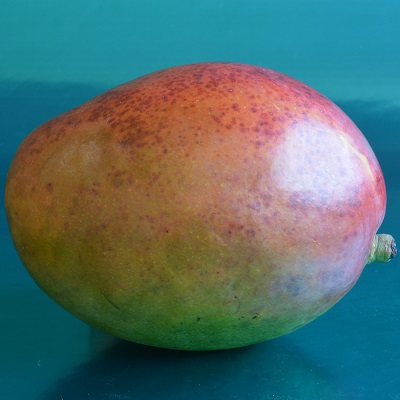 Kensington Pride is a smallish oval mango with an exceptionally fine, spicy, sweet flavour. The skin is pale green which develops to an attractive pale yellow with maturity, often with a red blush. The flesh is a golden yellow colour, quite dense and is largely fibreless. The fruit is classed as medium-large.
Kensington Pride is a smallish oval mango with an exceptionally fine, spicy, sweet flavour. The skin is pale green which develops to an attractive pale yellow with maturity, often with a red blush. The flesh is a golden yellow colour, quite dense and is largely fibreless. The fruit is classed as medium-large.
Kensington Pride is, for good reason, the favoured mango of Australia.
The seed of Kensington Pride is polyembrionic, i.e. two seedlings emerge from one seed.
Origin: First described as a variety in Bowen, Queensland, Australia. The fruit possibly came from India, brought by merchants to the busy horse-trading town of Bowen in the mid 19th century. Seed from various mangoes was planted by a GE Sandrock, the Harbourmaster, who passed the better quality resulting fruit to a Mr McDonald. These were planted on his property at Adelaide Point, near Bowen from where further selection by a Mr Harry Lott isolated a good fibreless mango. This was cultivated by Harry Lott on his own farm, ‘Kensington’, circa 1880, from whence it spread to other regions to be known as Kensington Pride.
Grown in: Tropical and sub-tropical regions of Australia. The main production areas are: Gin Gin, Carnarvon and Kununurra in Western Australia; Darwin and Katherine in the Northern Territory; Mareeba / Dimbulah, the Burdekin, Bowen, Rockhampton / Yeppoon, Bundaberg, Gympie and the Lockyer Valley in Queensland; and northern New South Wales.
Harvest & Availability: Harvest time depends on location, but can be anything between mid-September and March.
Carnarvon, Western Australia: late December to early February
Marketing in Europe:
November: from Australia



